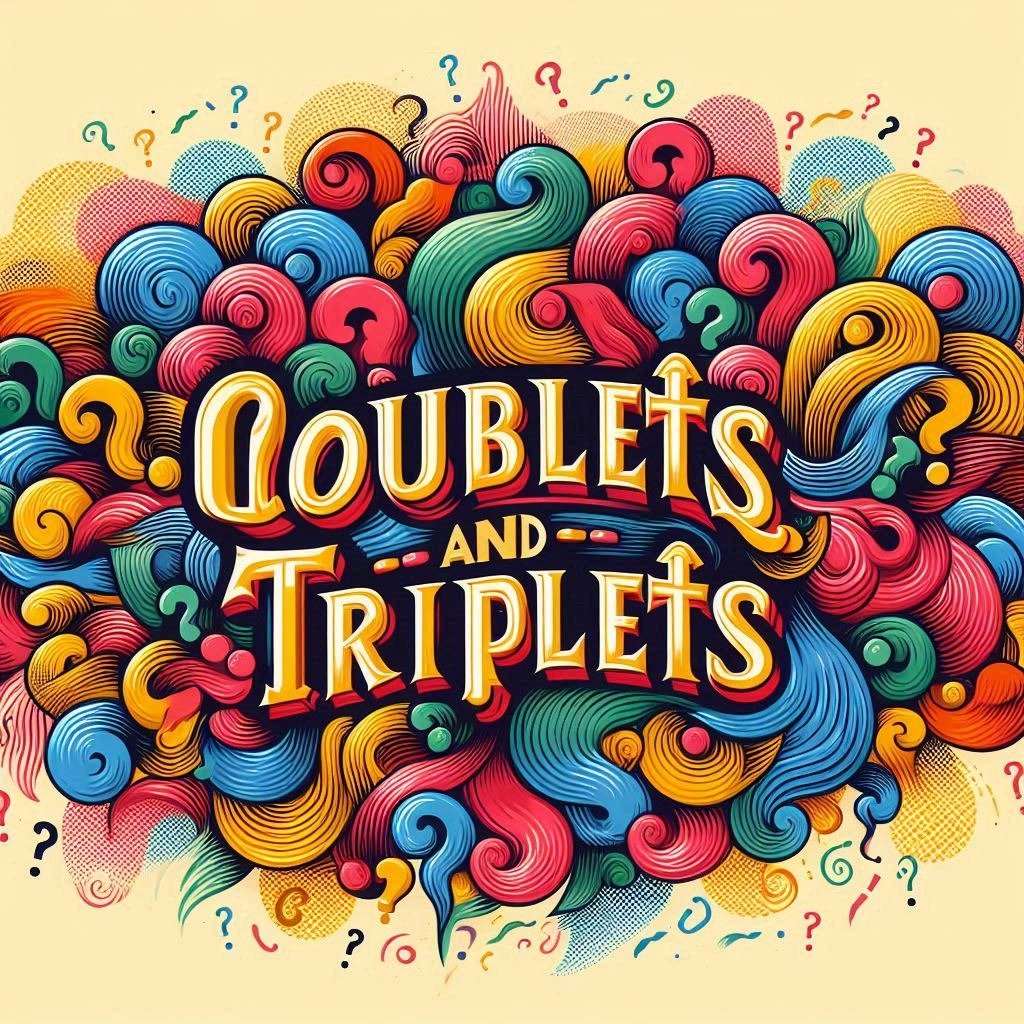Doublets and Triplets, but Luckily No Math Involved!
Doublets and Triplets, but Luckily No Math Involved!
by Irene Radillo-Díaz
CA and Federally Certified Court Interpreter
We’ve all come across them in court, though they are so ingrained as part of court-speak that we often don’t even notice them.
Doublets or binomials are standardized phrases where the component words frequently (though not always) are synonyms that are joined by the conjunction “and.” Interestingly, they always appear in a specific non-alterable word order:
· Cease and desist (never desist and cease),
· free and clear
· ways and means
· each and every
· aid and abet
· law and order
· privileged and protected
· armed and dangerous
· assault and battery
· indemnify and hold harmless
· due and payable
· lewd and lascivious
· heirs and successors,
· any and all
· peace and quiet
· null and correct
· will and testament
· legal and valid
· signed and sealed
· fair and equitable
· terms and conditions. And so many more, especially prevalent in legal texts.
And then there are the triplets or trinomials:
· knowingly, willingly, and intelligently
· null, void, and of no effect
· ordered, adjudged, and decreed
And finally, there are quadruplets… quadrials… quadrotials? Um… OK, we’re making that up, fortunately! Or are we…?
Why, oh, why must we face this issue where the terms seem so similar as to render at least one of them apparently unnecessary? And what do you do when they pop up during a hearing or sight translation? Must you come up with an equivalent for each word that has a very similar meaning? Does your B language have ready-made equivalents? And why do we even have these repetitive words?
To answer this, it helps to know a very brief history of why they exist. Per various sources, they often have roots in different medieval languages – Germanic, Old English, Norman French, or Latin. Some terms appear repetitive because they were absorbed from Old English to Middle English and “medieval writers and lawyers felt they had to use words from both languages… to ensure documents would be understood and respected by all.” [Source: https://www.languageservicesdirect.co.uk/legal-doublets-what-are-they-blog-2/ ]. The doubling of terms became fashionable and to make it even more fun, they started combining these terms with French terms.
To resolve them when they come up as part of our interpreting, we should become as familiar as we can with equivalent terms of art in our B language, and accept that sometimes we will not be providing two terms for a doublet or three for a triplet. What is very true is that they provide an opportunity to expand our vocabulary, as we research them and gain further equivalent terms, because that’s what we do as word nerds, as we always want to be better and know more! So, we might even say: Thanks, doublets and triplets!
Let us know how if you’ve faced others, how you would tackle these, share your experiences, and don’t forget to check out our Free Resources and other materials at
TheConfidentInterpreter.com
Feel free to repost but make sure you give us credit.
Copyright: 2025. The Confident Interpreter. All rights reserved.

